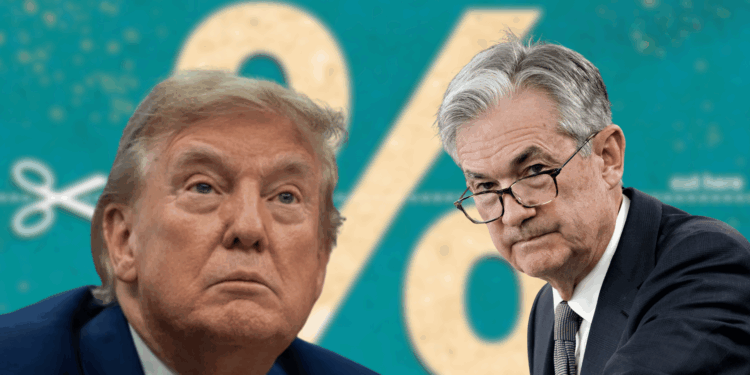- Trump continues to pressure Fed Chair Powell for immediate rate cuts, clashing over interest rates and a $2.5B renovation project.
- Legal and political scrutiny is rising, with lawsuits, congressional probes, and calls to amend the Fed’s founding act.
- Despite tension, Powell defends the Fed’s independence as market participants expect the first rate cut to come in September.
As the Federal Reserve gears up for its latest policy meeting, President Donald Trump is ramping up pressure on Chair Jerome Powell to cut interest rates. During a high-profile visit to the Fed’s headquarters last week, Trump publicly clashed with Powell over a $2.5 billion renovation project, reiterating his demand for lower rates. Despite the theatrics, markets widely expect the Fed to hold steady again this Wednesday, postponing any rate adjustments until September.
However, not all within the Fed agree. Governor Christopher Waller is reportedly considering dissenting at the upcoming meeting, believing that any inflation resulting from Trump’s tariffs will be short-lived. Waller’s view reflects growing division within the central bank, even as Powell maintains his wait-and-see approach, supported by a still-strong labor market and moderate inflation metrics.
Mounting Political Pressure and Legal Headaches
Trump’s criticism of Powell isn’t isolated to interest rate policy. Treasury Secretary Scott Bessent has called for an internal audit of the Fed’s costly renovation, suggesting the institution has overstepped its original monetary mandate. At the same time, the Fed faces a lawsuit from Azoria Capital, a Trump-aligned money manager, demanding that FOMC meetings be opened to the public in compliance with a 1976 transparency law. Meanwhile, Rep. Dan Meuser is reportedly launching a congressional probe into the central bank.
Additional pressure is coming from Rep. Anna Paulina Luna, who wants the DOJ to investigate Powell for perjury, and House Speaker Mike Johnson has floated the idea of modifying the Federal Reserve Act itself. Though sweeping changes are unlikely before Congress returns from its summer recess, the atmosphere of scrutiny is intensifying.
Powell’s Defense and the Case for Independence
Powell has repeatedly insisted that his removal would be unlawful and has defended the Fed’s independence in both monetary policy and its building upgrades. In a letter to Russ Vought, he addressed cost concerns and asserted the Fed’s commitment to public accountability. Meanwhile, Fed insiders like Chicago’s Austan Goolsbee and former Kansas City President Esther George have voiced concerns about the political campaign eroding the institution’s credibility.
George warned that politicizing the Fed could undermine its integrity and harm long-term economic outcomes. She pointed to historical examples where government interference in monetary policy led to poor results. Goolsbee echoed the need to preserve Fed independence, describing Powell as honorable and the current criticism as deeply troubling.
Looking Ahead: Independence Tested, Rates in Focus
Although Powell’s term as chair ends in May 2026, Trump’s rhetoric suggests he may wait it out rather than attempt a premature dismissal. Meanwhile, Powell will face renewed scrutiny during Wednesday’s press conference, where he’s expected to reinforce the Fed’s cautious approach. Despite Trump’s latest campaign, market watchers are betting that the first rate cut of the year won’t come until the September meeting.
As political noise continues to grow, the Federal Reserve’s credibility—and its ability to remain insulated from election-year pressures—hangs in the balance.














